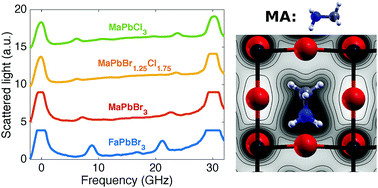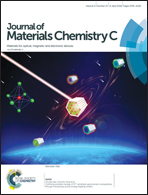The effect of ionic composition on acoustic phonon speeds in hybrid perovskites from Brillouin spectroscopy and density functional theory†
Abstract
Hybrid organic–inorganic perovskites (HOIPs) have recently emerged as highly promising solution-processable materials for photovoltaic (PV) and other optoelectronic devices. HOIPs represent a broad family of materials with properties highly tuneable by the ions that make up the perovskite structure as well as their multiple combinations. Interestingly, recent high-efficiency PV devices using HOIPs with substantially improved long-term stability have used combinations of different ionic compositions. The structural dynamics of these systems are unique for semiconducting materials and are currently argued to be central to HOIPs stability and charge-transport properties. Here, we studied the impact of ionic composition on phonon speeds of HOIPs from Brillouin spectroscopy experiments and density functional theory calculations for FAPbBr3, MAPbBr3, MAPbCl3, and the mixed halide MAPbBr1.25Cl1.75. Our results show that the acoustic phonon speeds can be strongly modified by ionic composition, which we explain by analysing the lead-halide sublattice in detail. The vibrational properties of HOIPs are therefore tuneable by using targeted ionic compositions in the perovskite structure. This tuning can be rationalized by non-trivial effects, for example, considering the influence of the shape and dipole moment of organic cations. This has an important implications for further improvements in the stability and charge-transport properties of these systems.

- This article is part of the themed collection: International Year of the Periodic Table : From Pb and Sn Perovskites to the Next Generation


 Please wait while we load your content...
Please wait while we load your content...